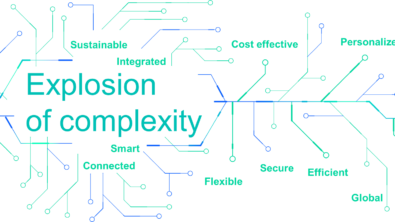Airborne software compliance with MBSE

For decades, the primary driver of aircraft development has been airworthiness. It makes sense, the primary purpose of an aircraft is to fly and all the other systems within a plane were placed as secondary requirements. The growth of electronic systems in aircraft, controlled through software has changed that dynamic – these domains cannot be left as secondary. Answering the change is model-based systems engineering or MBSE, and its not just working with the new requirements it is making the process faster and more transparent for evolving regulatory requirements.
The inclusion of software avionics into airworthiness certifications under standards like DO178C has heightened the competition within the space. Traditionally, software focused companies could iterate and innovate in these environments faster than the OEMs with profound mechanical expertise. To fight against a home-field advantage, companies need to adopt a solution that delivers immediate value. That includes some essential building blocks for agile methods – collaboration, traceability and structured re-use. These then drive the continuous verification and validation of the aircraft systems to ensure the right plane is built and that it is built right.
For a more complete understanding of how this will work within aircraft development programs, the webinar Supporting MBSE with airborne software compliance with Thomas Behrens and Larry Selby is a great start. But if you still are not sure if this solution is for you, here are some highlights from their presentation.
Collaboration
Not only are the systems in an aircraft interconnected, development of the systems is often spread around the globe with multiple sub-contractors and suppliers. Delivering the right plane, on time and built right requires not only seamless collaboration, but secure collaboration with granular access controls. Shared data, whether it is the newest data set for a motor performance curve or the code libraries to operate it in an electrified aircraft needs to be easy to use, easy to access, easy to deploy and easy to configure.

Traceability
For regulated industries it is often the case to focus on safety regarding the benefits of traceability – knowing where something went wrong in development is critical to reliably flying planes. But there is lots of individual knowledge being leveraged throughout development that is highly valuable. Usually that means linking specific design processes to a product definition, great now the process has been captured and is available for review when needed. Spread this knowledge capture across all of development and now new hires or recently transitioned employees could have access to a wealth of information on internal methodologies.
Reuse
Critical for companies expanding their dependence on software integrations is re-use. Software iterates very quickly and being able to use predefined or pre-qualified code accelerates the development cycle for the project. When running on a continuous release cycle, each version in the chain needs to be understood in the context of the system and without re-use that would mean there is a new system being developed for each software version. Working instead in a versioned environment, flowed from the traceability of development, allows for one work area with the ability to look at approved designs and work in progress design in a managed fashion.
Integrating software with MBSE
Moving into the future, more aircraft will be run with software and to keep pace with innovation the tools need to handle that rapid evolution. Changes need to be understood in the context of the greater system, not just the interconnects between software and hardware, but complete understanding. How will the use of stepped voltage compare to continuous changes in an electric motor? Do specific signals prompt more electromagnetic interference that could impact a component in proximity? These are complex questions to answer and the development of software for aircraft needs to lend itself to answering them when needed, MBSE creates the framework for that pursuit.
Siemens Digital Industries Software is driving transformation to enable a digital enterprise where engineering, manufacturing and electronics design meet tomorrow.
Xcelerator, the comprehensive and integrated portfolio of software and services from Siemens Digital Industries Software, helps companies of all sizes create and leverage a comprehensive digital twin that provides organizations with new insights, opportunities and levels of automation to drive innovation.
For more information on Siemens Digital Industries Software products and services, visit siemens.com/software or follow us on LinkedIn, Twitter, Facebook and Instagram.
Siemens Digital Industries Software – Where today meets tomorrow


